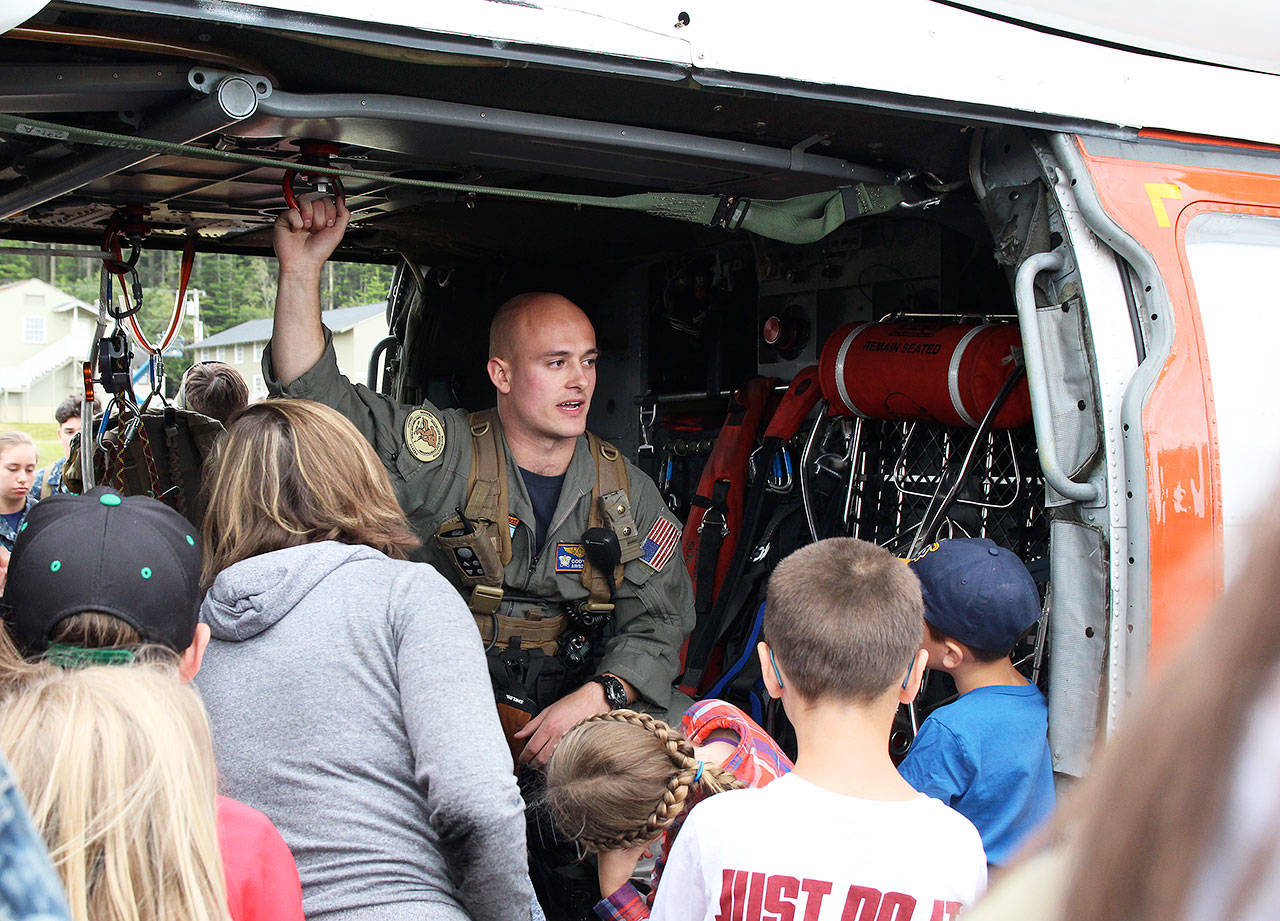No one was injured or in distress when the Search and Rescue helicopter from Naval Air Station Whidbey Island landed at Camp Casey Conference Center Thursday morning.
Rather, the aircraft and its crew were met by an eager group of Sea Cadets.
Approximately 150 cadets, ranging from ages 10 to 18, gathered at the old Central Whidbey military installation for summer training, according to Lt. Cmdr. Jakob Zetwick, a regional director for the Sea Cadets.
Thursday marked the second year a SAR crew came to answer questions about the job and do a rappelling demonstration.
Questions ranged from how much did the helicopter cost to what would happen if someone stuck his or her hand up while the blades were spinning. The respective answers are around $23 million, and the hand would come clean off.
“We are so thankful to the naval air station here,” said Maria England, 18, command master chief for the Oak Harbor squadron of the Sea Cadets. “We get so much support from them.”
England said she is interested in joining the coast guard and studying medicine. She found the stories from the SAR crew particularly interesting.
“It makes me wonder if maybe instead of just staying in the hospital, I’d like to try something more ambitious,” she said.
The SAR crew is a small, elite group of Navy personnel.
Corpsman John Siedler told cadets about the rigorous training each member must complete before joining, including escaping from an overturned helicopter shell in a pool. There are 22 people in the NAS Whidbey unit, composed of pilots, rescue swimmers and medical technicians.
Six crew members brought one of the unit’s MH-60S Knighthawk helicopters for the cadets to look at and learn about.
The aircraft can land at an altitude of 13,000 feet, fly a maximum of 180 mph and stay in the air for about three and a half hours, Siedler told the cadets.
The NAS Whidbey unit is the busiest one in the nation, Siedler said.
The crew performs missions for both Navy personnel at the base and civilians all over the state of Washington.
Many of the cadets they spoke to were receiving training in basic, advanced and field medicine. The nine-day summer training includes opportunities for developing specialized skills. The Oak Harbor-based Orion Squadron hosted the training but personnel from all over the nation attended, Zetwick said.
Children ages 10 through 12 can join the Navy League Cadet Corps and those ages 13 through 17 can be join the Naval Sea Cadet Corps. Orion Squadron will hold a recruitment event July 28 at Oak Harbor Library.



